What Does Tooth Polish Do? How Tooth Polish Enhances Your Oral Hygiene Routine
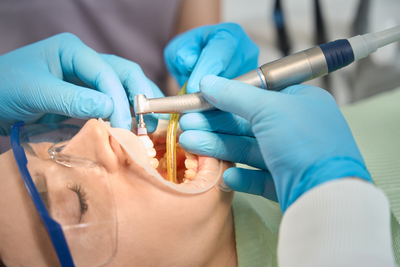
Understanding Tooth Polish
What is Tooth Polish?
Before I started using tooth polish, I was always curious about what it is and what does tooth polish do. Tooth polish is a dental product designed to remove surface stains and polish tooth surfaces, giving your teeth a smooth, shiny appearance. It's different from toothpaste, as it focuses on polishing teeth rather than cleaning them. I found out that dental hygienists often use tooth polishing during dental cleanings, applying a polishing paste with a rubber cup attached to a mechanical device. This helps remove plaque and superficial stains, leaving the tooth enamel looking cleaner and brighter.
There are different types of tooth polishing, including air polishing and selective polishing. Air polishing uses a mixture of air, water, and an abrasive agent, like sodium bicarbonate, to clean tooth surfaces. Selective polishing, on the other hand, targets specific areas with surface stains, like extrinsic stain removal, and can be done during a dental procedure. When I first started looking into tooth polish, I was amazed at the variety of options available to improve my dental hygiene and help me feel more confident about my smile.
How Does Tooth Polish Work?
As someone who had struggled with surface stains, I was eager to learn how tooth polish works. It turns out that tooth polishing removes surface stains and debris from the tooth surface by using an abrasive polishing agent, such as baking soda or a specially formulated dental polishing paste. This agent, combined with the action of a rubber cup or an air powder polishing device, gently buffs the tooth enamel, smoothing the outer layer and removing stains. The result is a shiny and smooth enamel surface that feels clean and looks brighter.
During my research, I also discovered that tooth polishing is not just about aesthetics. Removing surface stains can help prevent plaque buildup and reduce the risk of gum disease. By polishing tooth surfaces, you also eliminate areas where bacteria can thrive, promoting better oral health overall. I realized that incorporating tooth polish into my routine could have a significant impact on both the appearance and health of my teeth and gums.
Comparing Tooth Polish to Toothpaste
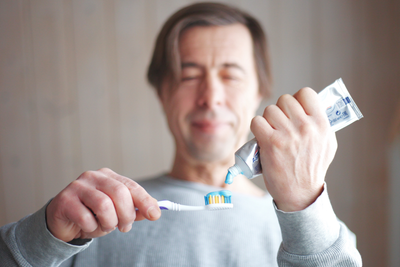
At first, I wasn't sure about the difference between tooth polish and toothpaste. However, I quickly learned that while both products aim to improve dental health, they serve different purposes. Toothpaste is primarily designed for tooth cleaning and removing plaque, whereas tooth polish focuses on polishing tooth surfaces and removing surface stains. Toothpaste often contains fluoride to help strengthen tooth enamel and prevent cavities, while tooth polish relies on abrasive agents to achieve a smooth, shiny finish.
Another key difference is that toothpaste should be used daily as part of your oral hygiene routine, while tooth polishing may not be necessary every day. Dental hygienists typically perform tooth polishing during regular dental cleanings, but you can also incorporate it into your at-home routine as needed, depending on the advice of your dentist. I found that using tooth polish in addition to my regular toothpaste helped me achieve a whiter, more radiant smile while still maintaining excellent dental hygiene.
Key Benefits of Tooth Polish
Improved Teeth Whitening
One of the main reasons I was drawn to tooth polish was its ability to improve teeth whitening. After years of feeling self-conscious about my stained teeth, I was thrilled to discover that tooth polishing could help me achieve a brighter smile. By removing surface stains and polishing tooth enamel, tooth polish can significantly enhance the natural whiteness of your teeth. I noticed a visible difference in the color of my teeth after just a few uses, and I couldn't believe how much more confident I felt with my new, brighter smile.
For even better results, I found that combining tooth polish with other teeth whitening products, such as whitening toothpaste or professional dental treatments, can lead to a more dramatic transformation. However, it's essential to consult with your dentist before using multiple whitening products to ensure that you're not harming your tooth enamel or causing tooth sensitivity. My dentist recommended a specific tooth polish and whitening toothpaste combination that worked wonders for me without causing any discomfort or damage.
Reduced Plaque Buildup
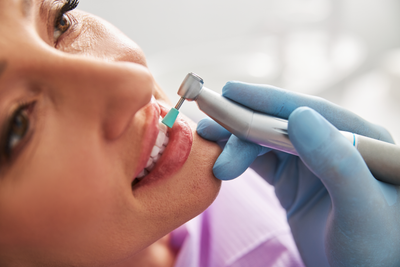
Another benefit of tooth polishing that I discovered is its ability to reduce plaque buildup. Plaque is a sticky film of bacteria that forms on tooth surfaces and can lead to cavities, gum disease, and bad breath if not removed through regular brushing and dental cleanings. Tooth polish can help remove plaque and prevent it from adhering to the tooth surface, making it easier to maintain good oral health. By incorporating tooth polish into my routine, I not only improved the appearance of my teeth but also took steps to protect them from potential damage and decay.
It's important to remember that tooth polishing is not a substitute for regular tooth brushing and flossing. While it can help reduce plaque buildup, it doesn't remove plaque entirely. I still need to maintain my daily oral hygiene routine and visit my dentist for regular checkups and cleanings to ensure my teeth and gums remain healthy.
Healthier Gums and Teeth
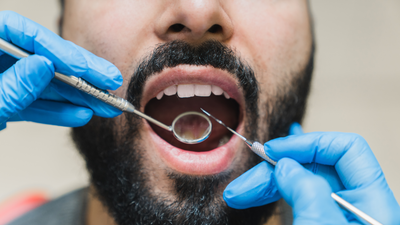
After I started using tooth polish, I noticed that my gums and teeth felt healthier overall. By removing surface stains and plaque, tooth polish can help prevent gum disease and cavities, leading to stronger teeth and healthier gums. Tooth polishing also smooths the tooth surface, making it harder for bacteria to adhere and multiply. This results in less inflammation, less risk of gum disease, and an overall improvement in oral health.
My dental hygienist even commented on the positive changes she observed during my dental checkups. She was pleased to see that my tooth polishing efforts were paying off, and she encouraged me to continue using tooth polish as part of my oral care routine. I couldn't be happier with the impact tooth polish has had on my dental health and the confidence it has given me to smile freely without worrying about stains or plaque.
Boosting Confidence with a Brighter Smile
Before using tooth polish, I was always self-conscious about my stained teeth, and it took a toll on my self-esteem. However, after incorporating tooth polish into my oral care routine, I noticed a significant improvement in the appearance of my teeth. They were whiter, shinier, and overall more attractive. This change had a profound impact on my confidence, and I found myself smiling more often and feeling more at ease in social situations.
Now, instead of hiding my smile or worrying about what others might think of my teeth, I can focus on enjoying myself and making connections with the people around me. The confidence boost that tooth polish has given me is truly priceless, and I can't imagine going back to my old oral care routine without it. I feel proud of my smile and the effort I've put into maintaining my dental health, and I'm grateful for the positive change that tooth polish has brought into my life.
Choosing the Right Tooth Polish
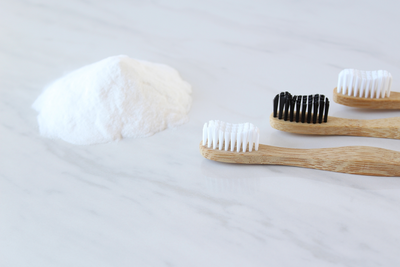
Understanding the Ingredients
When I first started exploring tooth polish options, I knew it was essential to understand the ingredients to make an informed decision. Tooth polishes contain abrasive agents that help remove surface stains and polish tooth enamel. Some common abrasive agents include baking soda, sodium bicarbonate, and specially formulated dental polishing pastes. It's important to choose a tooth polish with ingredients that are both effective and safe for your tooth enamel and gums.
While researching tooth polishes, I also learned about the different levels of abrasiveness. Some polishes have a coarse abrasion, while others offer a fine abrasion. Coarse abrasion tooth polishes might be more effective at removing severe stains, but they can also be harsher on tooth enamel and cause tooth sensitivity. On the other hand, fine abrasion tooth polishes are gentler on the teeth and may be better suited for those with sensitive teeth or receding gums. It's crucial to consult your dentist or dental hygienist to determine the right tooth polish for your specific needs and tooth sensitivity levels.
Top Brands and Products to Consider
With so many tooth polish products on the market, it can be challenging to decide which one is best for you. Some popular brands and products that I found during my research include those recommended by dentists and dental hygienists. By looking into customer reviews and testimonials, I was able to narrow down my options and choose a tooth polish that was highly regarded by both professionals and users.
When selecting a tooth polish, it's essential to consider factors such as the ingredients, abrasiveness level, and ease of use. I found it helpful to read product descriptions and reviews to learn about the experiences of others who have used the tooth polish. This helped me make a well-informed decision and choose a tooth polish that met my needs and preferences.
Dentist Recommendations

Before incorporating tooth polish into my oral care routine, I sought the advice of my dentist. They were able to provide me with valuable information about the benefits and potential risks of tooth polishing and recommend specific products that would be best suited for my dental health needs. By consulting with my dentist, I felt confident that I was making the right choice and taking steps to improve my dental health without causing unnecessary harm to my teeth or gums.
I highly recommend talking to your dentist or dental hygienist about tooth polish before trying it out. They can guide you on the best practices for using tooth polish and provide personalized recommendations based on your unique dental needs. This will ensure that you're using tooth polish safely and effectively while reaping the maximum benefits for your oral health.
Incorporating Tooth Polish into Your Routine
When Should You Use Tooth Polish?
After deciding to try tooth polish, the next step was to figure out when and how often to use it. While dental professionals typically perform tooth polishing during dental cleanings, it's also possible to incorporate tooth polish into your at-home oral care routine. However, unlike toothpaste, tooth polish doesn't need to be used every day. It's essential to consult with your dentist to determine the optimal frequency for using tooth polish based on your dental health and specific needs.
In my case, my dentist recommended using tooth polish once or twice a week to maintain a bright, stain-free smile without causing tooth sensitivity or damaging my tooth enamel. By following my dentist's advice, I was able to achieve the desired results without any negative side effects.
How to Properly Apply Tooth Polish
To effectively use tooth polish, it's crucial to apply it correctly. I learned that the proper application technique involves using a soft rubber cup or a toothbrush with soft bristles to gently buff the tooth polish onto the tooth surface. When I first started using tooth polish, I made sure to apply it in small, circular motions, focusing on the areas with surface stains or discoloration. It's essential to avoid pressing too hard, as this can cause damage to the tooth enamel and potentially lead to tooth sensitivity.
After polishing each tooth, I rinsed my mouth thoroughly with water to remove any residual polishing paste. By following these steps, I was able to effectively use tooth polish to improve the appearance of my teeth and maintain good oral health. Remember that it's always a good idea to consult with your dentist or dental hygienist for guidance on the proper application technique and any other tips specific to your dental needs.
Pairing Tooth Polish with Other Oral Care Products
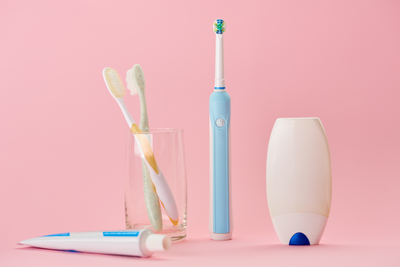
To maximize the benefits of tooth polish, I found it helpful to pair it with other oral care products. For instance, using a fluoride toothpaste daily can help strengthen tooth enamel and prevent cavities, while flossing regularly helps remove plaque and debris from between the teeth. Additionally, using a mouthwash can help kill bacteria and freshen your breath, further promoting good oral health.
When I decided to incorporate tooth polish into my routine, I continued using my regular toothpaste, floss, and mouthwash in addition to the tooth polish. This comprehensive approach helped me achieve the best possible results and maintain a bright, healthy smile. It's essential to consult with your dentist or dental hygienist about the right combination of oral care products for your specific needs and to ensure you're using them safely and effectively.
Ensuring Long-Term Dental Health
Maintaining a Balanced Oral Hygiene Routine
While tooth polish is a fantastic addition to my oral care routine, it's important to remember that maintaining a balanced oral hygiene regimen is key to ensuring long-term dental health. This includes regular brushing with fluoride toothpaste, flossing daily, and using mouthwash as needed. By sticking to a consistent oral care routine and incorporating tooth polish as recommended by my dentist, I've been able to maintain a healthy, beautiful smile and prevent common dental issues such as cavities and gum disease.
It's also crucial to pay attention to your diet and lifestyle habits, as these can significantly impact your dental health. Consuming a balanced diet rich in vitamins and minerals, limiting sugary foods and beverages, and avoiding tobacco products can all help maintain strong teeth and gums. By adopting healthy oral care habits and incorporating tooth polish into my routine, I feel confident in my ability to maintain good dental health for years to come.
Regular Dental Checkups and Cleanings
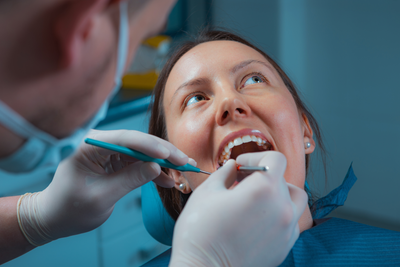
Regular dental checkups and cleanings are essential for maintaining good oral health and preventing dental issues before they become more serious. During these visits, my dentist and dental hygienist assess my overall dental health, check for signs of gum disease or cavities, and perform a thorough cleaning to remove plaque and tartar buildup. They also provide valuable guidance on how to improve my oral care routine, including the use of tooth polish and other products.
By scheduling regular dental checkups and cleanings, I've been able to stay on top of my dental health and address any concerns early on. These visits have also allowed me to receive personalized advice on using tooth polish effectively and safely, ensuring that I'm maximizing its benefits without causing harm to my teeth or gums. I highly recommend making regular dental appointments a priority, as they play a crucial role in maintaining long-term dental health and a bright, confident smile.
Adopting Healthy Oral Care Habits
Aside from using tooth polish and maintaining a consistent oral care routine, I've also focused on adopting healthy oral care habits to support my dental health. For example, I make sure to drink plenty of water throughout the day, which helps rinse away food particles and bacteria that can lead to plaque buildup and tooth decay. I also try to limit my consumption of staining beverages like coffee, tea, and red wine, and if I do indulge, I make sure to rinse my mouth with water afterward to minimize the risk of surface stains.
Another important habit I've adopted is using a straw when drinking acidic or staining beverages, as this helps to minimize contact with my tooth enamel and reduce the risk of stains and enamel erosion. Chewing sugar-free gum after meals can also help stimulate saliva production, which aids in neutralizing acids in the mouth and washing away food particles. By incorporating these healthy oral care habits into my daily routine, I've been able to maintain a beautiful, stain-free smile and support my overall dental health. Remember, it's essential to consult with your dentist or dental hygienist for personalized advice on the best oral care habits for your unique needs and lifestyle.
Common Misconceptions About Tooth Polish
Tooth Polish is a Substitute for Regular Toothpaste
One common misconception I used to have was that tooth polish could replace my regular toothpaste. However, I've learned that tooth polish is meant to be used as a supplement to my daily oral hygiene routine, not as a substitute for toothpaste. Toothpaste contains fluoride and other essential ingredients that help to prevent cavities, strengthen enamel, and maintain overall dental health. Tooth polish, on the other hand, focuses primarily on removing surface stains and improving the appearance of teeth.
To maintain optimal oral health, it's essential to use both toothpaste and tooth polish as directed by a dental professional. By combining these products in my routine, I've been able to enjoy the benefits of both cleaner, healthier teeth and a brighter, more radiant smile.
Using Tooth Polish Can Damage Teeth
Another misconception I initially had was that using tooth polish could damage my teeth or wear down the enamel. While it's true that some abrasive agents in tooth polish can potentially cause harm if used improperly, I discovered that using tooth polish as directed and under the guidance of a dental professional can actually benefit my oral health. It's essential to select a tooth polish with the appropriate level of abrasiveness for my needs and to use the correct application technique to avoid damaging my teeth.
By following my dentist's recommendations and using tooth polish correctly, I've been able to enjoy the benefits of a brighter smile without any negative side effects. Always consult with your dentist or dental hygienist before incorporating tooth polish into your oral care routine to ensure you're using a product that's safe and effective for your specific dental needs.
Achieving a Radiant Smile with Tooth Polish
By understanding the benefits and proper usage of tooth polish, I've been able to enhance my oral hygiene routine and achieve a more radiant smile. Incorporating tooth polish into my routine has not only improved the appearance of my teeth but also contributed to better overall dental health. Remember to consult with a dental professional when selecting and using tooth polish to ensure you're using the most appropriate product and technique for your specific needs. With the right tooth polish and a balanced oral care routine, you too can enjoy a brighter, healthier smile that boosts your confidence and overall well-being.
